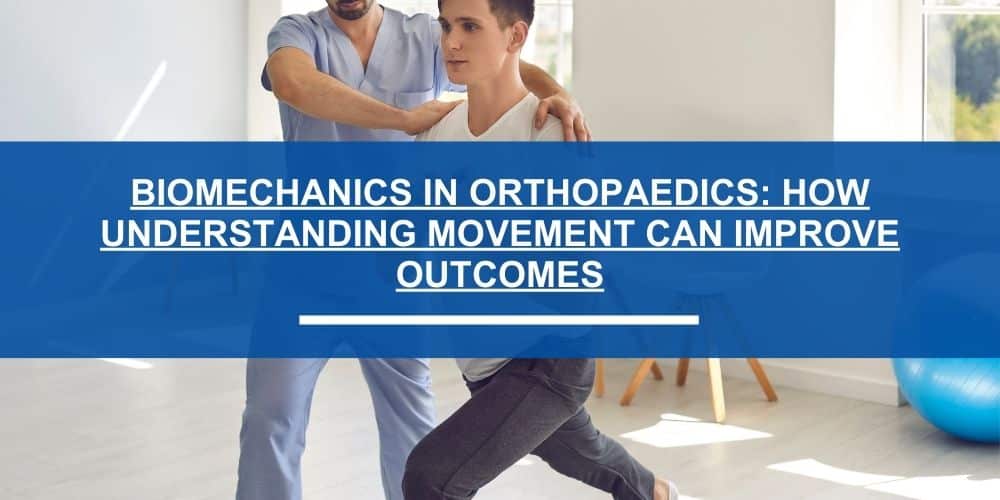Orthopaedics is not just about treating bones and joints; it’s a holistic approach that includes understanding the intricate mechanics of human movement. At the heart of this is biomechanics — the study of the structure, function, and motion of the mechanical aspects of biological systems. By diving deeper into biomechanics, orthopaedic specialists can optimize treatments and improve patient outcomes.
1. What is Biomechanics?:
- Orthopaedic specialists can pinpoint the origins of movement-related pain or discomfort more effectively.
- Movement analysis can highlight abnormal patterns that may lead to or have resulted from injuries.
2. Biomechanics in Diagnostics By understanding biomechanics:
When injuries strike, orthopaedic surgeons step in to:
- Diagnose: Employing X-rays, MRIs, and other tests to determine the injury’s extent.
- Treatment: Depending on the injury’s severity, this can range from medications and physical therapy to surgical interventions.
- Rehabilitation: Overseeing the athlete’s return to fitness, ensuring the injury heals correctly and strength is regained.
3. Treatment Optimization With a thorough grasp of biomechanics:
- Surgeons can make more informed decisions about procedures, ensuring that interventions align with natural movement patterns.
- Rehabilitation professionals can design targeted therapy regimens that promote optimal biomechanical function.
4. Prosthesis and Implant Design Biomechanics
Prosthesis and Implant Design Biomechanics plays a significant role in the design and testing of orthopaedic implants and prosthetics. By ensuring that these devices mimic natural biomechanical patterns, patients can achieve better functionality and comfort post-implantation.
5. Injury Prevention
Sports professionals and athletes can benefit immensely from biomechanical analysis:
- It can help identify high-risk movement patterns that might predispose an individual to injuries.
- Training regimens can be optimized to promote healthy biomechanics, reducing the chances of strain or injury.
6. The Future of Biomechanics in Orthopaedics
Emerging technologies, like wearable sensors and advanced motion-capture systems, are enhancing our understanding of biomechanics. As data collection and analysis become more sophisticated, personalized treatment plans based on individual biomechanics will likely become more prevalent, leading to even better patient outcomes.
Conclusion:
A multidimensional field, orthopaedics is continually evolving. The integration of biomechanical principles represents a significant leap forward, promising not only more effective treatments but also better strategies for injury prevention and rehabilitation. As technology and research progress, the bond between biomechanics and orthopaedics will only grow stronger, heralding a future where movement is both pain-free and efficient.








